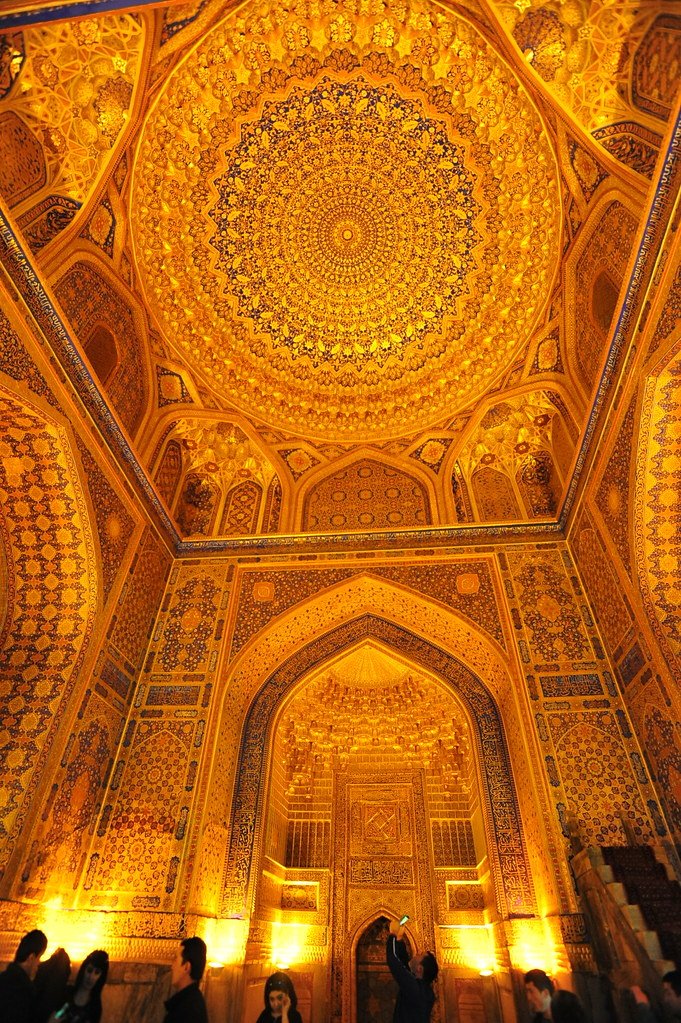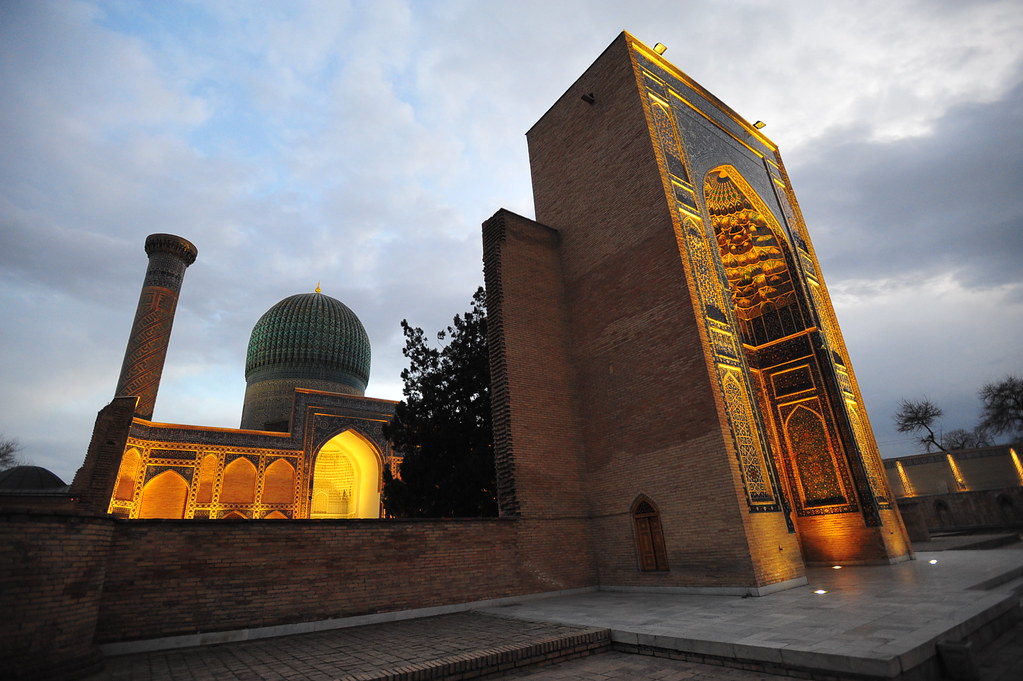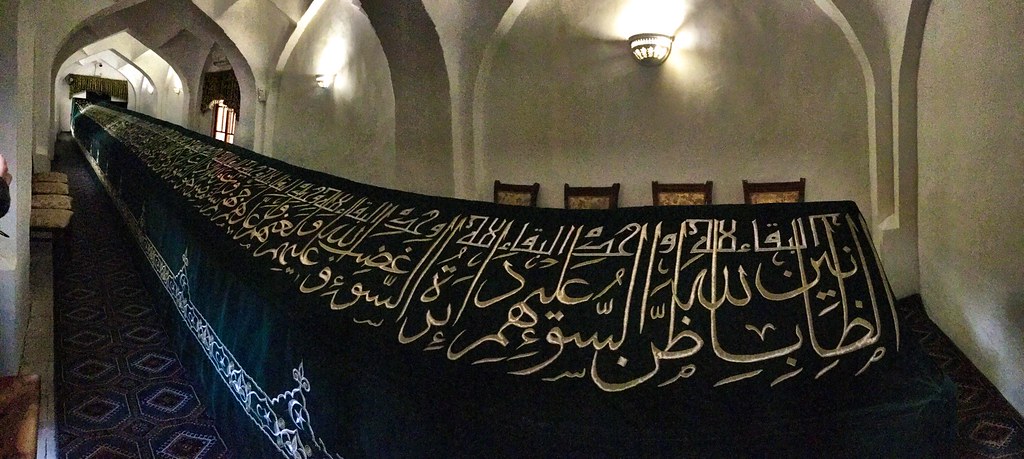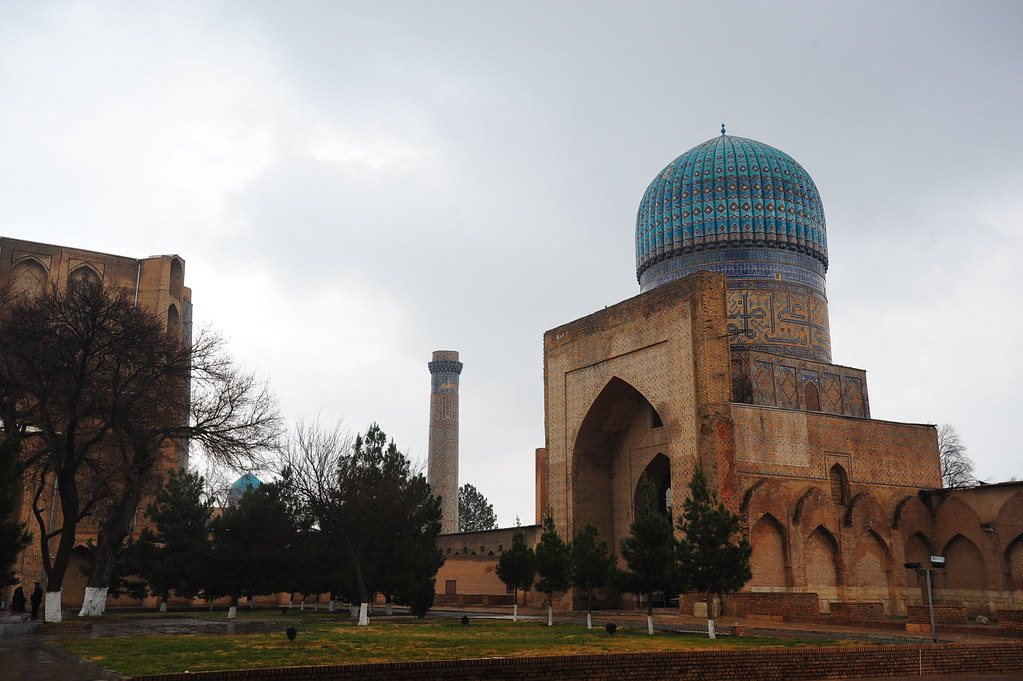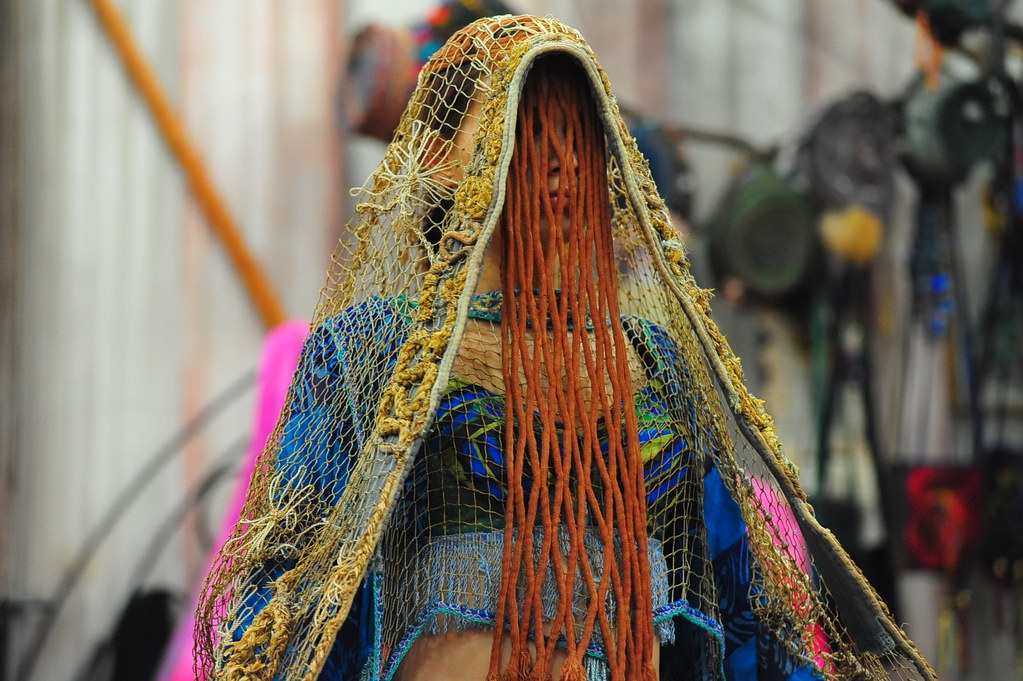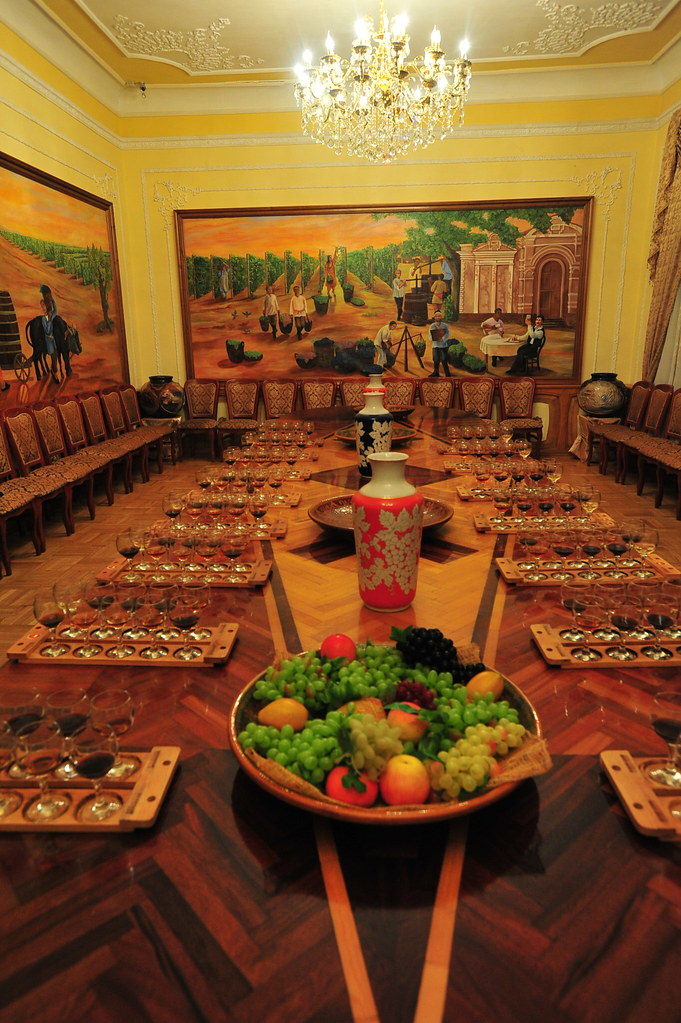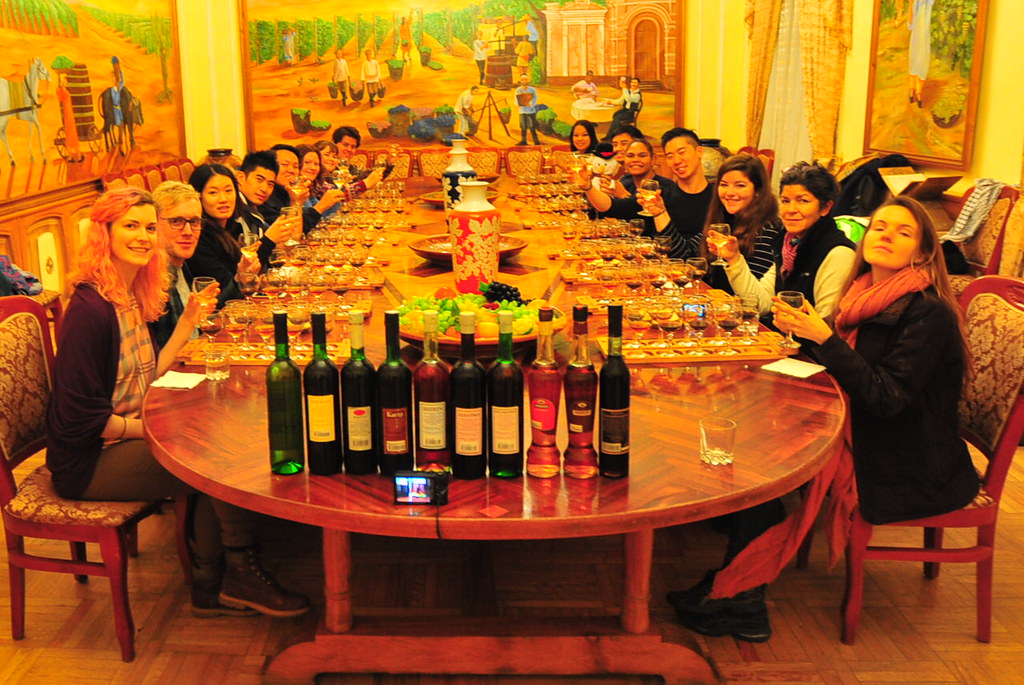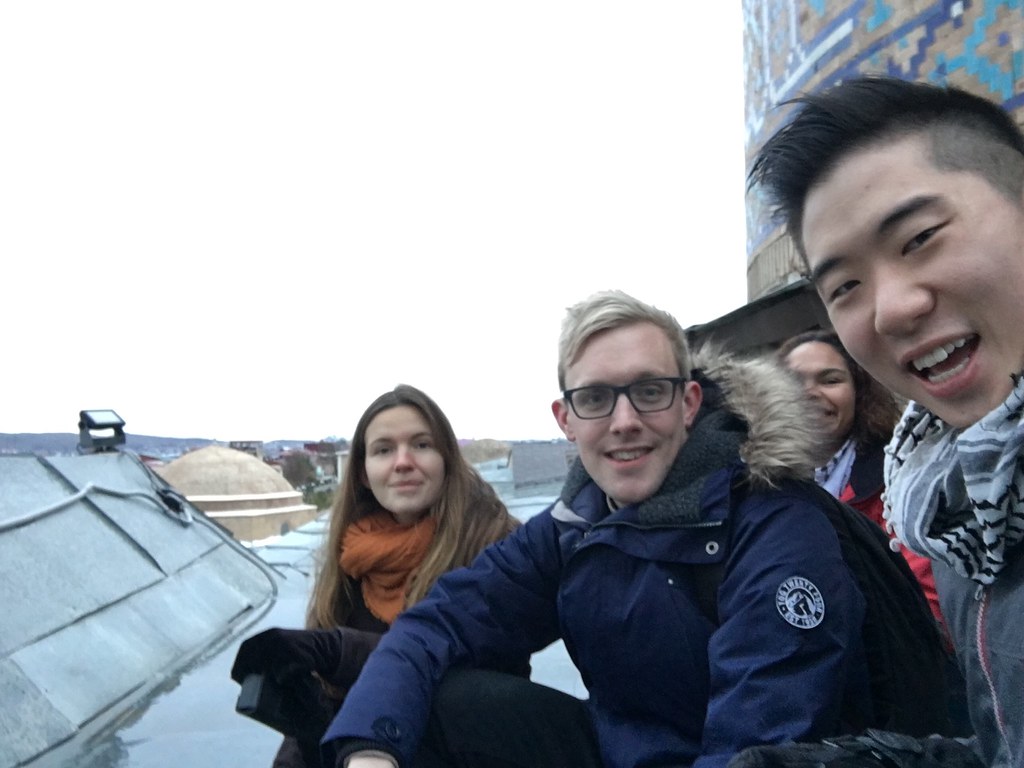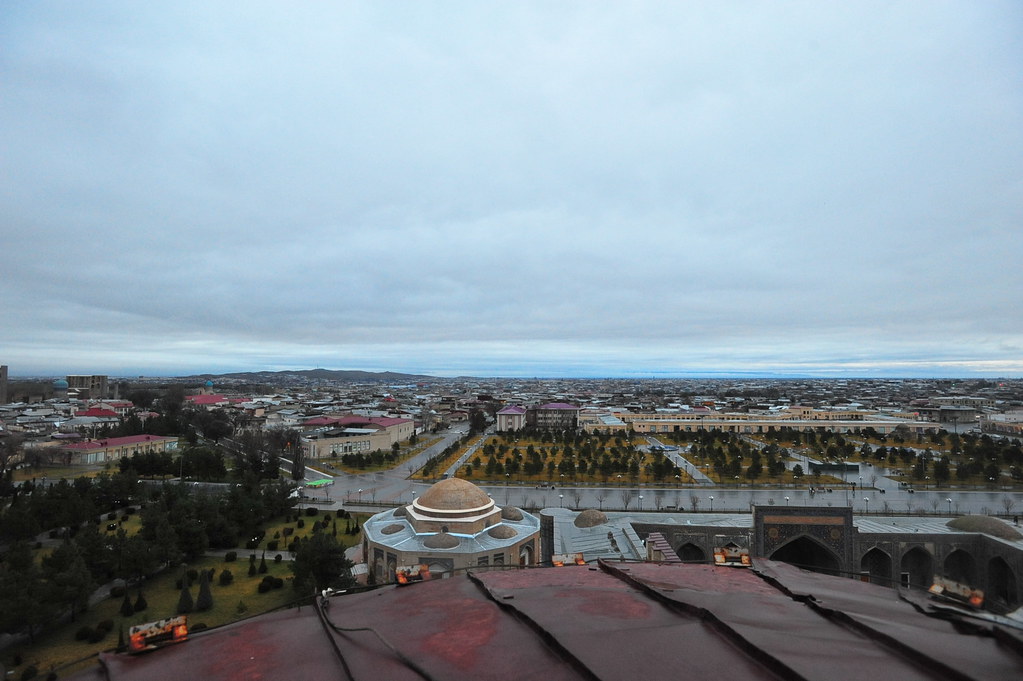We travel not for trafficking alone:
By hotter winds our fiery hearts are fanned:
For lust of knowing what should not be known
We make the Golden Journey to Samarkand.
– James Elroy Flecker, 1913
The mysticism surrounding The Silk Road has been synonymous with the city of Samarkand for centuries, having been immortalized by generations of countless poets and philosophers, and its dubious existence comparable to that of the lost city of Atlantis.We’re glad to confirm that Samarkand still does stand today, and it’s very much real as it is magical.
Waking up 7 am in Bukhara, our group got up for a 5-hour morning bus ride to Samarkand. We began to notice upon arrival how warm it was outside (up to 50-60 degrees F!). Due to a presumably an El Niño-related weather pattern causing this questionably warm winter for most of the globe, we took advantage of this by stripping down to T-shirts and lunched in the city center. Afterwards, we walked over to the crown jewel of Central Asia and The Silk Road, the majestic Registan complex.
Originally a commercial center and bazaar during medieval Samarkand, the three structures that make up The Registan are among the world’s oldest preserved medressas after the invasion of Genghis Khan. After its share of power grabs and earthquakes, the complex was reduced was a pile of unrecognizable rubble, until the Russian Soviets arrived and worked endlessly to restore them to the way they are today.
On the west side of the complex is the Ulugbek Medressa, finished in 1420 by the same architect who built the Kalon complex in Bukhara. On the east stands the Sher Dor (Lion) Medressa, noticeable for its Ligers (Tiger-Lion hybrids) depicted on the top that defied Islamic regulations against depicting live animals on their structures. In between the two is the Tilla-Kari Medressa with its resplendent mosque within that also contains photos of what The Registan looked like (pretty much rubble) before Soviet restoration.
We first check out Tilla-Kari Medressa in the middle.
The mosque inside Tilla-Kari:
The outside courtyard:
Sher-Dor Medressa on the east:
You can easily spend a few hours wandering here, losing yourself in arguably the most awesome sight of The Silk Road.
I also took a few panoramas in the courtyards (click to enlarge)…
…until Chris, Patricia and Eilidh started photobombing…
…and then I got an idea for my fellow monsooners to get creative (click to enlarge)…
…And then we started getting carried away (click to enlarge)…
Afterwards we headed to the Gur-E-Amin Mausoleum which houses the graves of one of the 3 great undefeated conquerors of the region (the other two being Alexander The Great and Genghis Khan), Timur. It also houses his 2 sons and 2 grandsons (including Ulugbek).
A famous true story is that when Soviet anthropologist Mikhail Gerasimov discovered Timur’s tombs in 1941, he came upon Timur’s inscription “Whoever opens this will be defeated by an enemy more fearsome than I.”
The next day, June 22, 1941, Hitler invaded the Soviet Union.
Inside the mausoleum:
Come by at dusk when the mausoleum lights up:
A suitably wintry cold, rainy Sunday greeted us the next morning. Layering up, we first drove over to visit the Tomb of the Old Testament Prophet Daniel off of the Siob River, known for housing the 18m long sarcophagus of Prophet Daniel after it was taken by Timur from Susa, Iran.
Legend has it that his body grows half an inch a year, thus requiring the construction of a newer, larger sarcophagus every few decades.
Afterwards we headed to Shah-i-Zinda or “Tomb of the Living King” and is otherwise known as an avenue of mausoleums (or a Necropolis) housing a descendent/cousin of Prophet Mohammed, and is also the site of a modern graveyard for today’s Sarmakandians.
Behind the complex lies the actual modern graveyard, which stretches endlessly as far as the eye can see:
Then through a local market, we walked to Bibi-Khanym Mosque. At 41m high, it formerly was one of the world’s largest mosques and was ordered to be built as a surprise gift by one of Timur’s wives, Bibi-Khanym, when Timur was away on a military campaign.
The story goes that the architect wouldn’t finish the construction of the mosque until Bibi-Khanym, who was of Chinese origin, gave him a kiss. When Timur returned and saw the mark that was left behind on the architect’s cheek, he was so upset that he ordered the architect (and 5,000 others) executed as well as mandating every woman should wear a veil so as to not tempt other men. In other words, Asian fetishism, yellow fever, and typical slut-shaming male privilege has been around since the dawn of time.
Despite yesterday’s spring-like weather, it got really cold at this point.
Our group then allowed ourselves some free time to explore on our own after lunch.
At 4pm we regrouped for an modernist Uzbek fashion show by a Russian designer:
Afterwards we drank away at a local Uzbek wine tasting where they served copious of liquid confidence.
The results of the wine tasting:
The next morning the 6 of us headed out at 7am for a sunrise visit of the Registan.
Although the day’s overcast skies prevented the sunrise from being the pretty thing it could’ve been, a security guard approached us as soon as we arrived and offered for us to climb the minaret (usually off-limits to tourists) for $15 USD per person as long as we climbed back down before 8am.
We negotiated the bribe down to $10 per person and after he brought a key to unlock a secret door in Sher-Dor mosque, we crawled up a set of dusty stairs in the dark to reach a ledge above the building.
After reaching the first ledge, the guard instructed us to keep ourselves crouched down to avoid being seen, as we waited for each of us to climb up the minaret one by one (the stairs can only fit one person at a time).
Once I was up at the top, I was able to peek my head out for an alternative, illegal view of the Registan from its highest point.
Afterwards, we snuck through the car park to avoid being detected and got on our 8am, 5-6 hour bus back to Tashkent.
![]()
- At time of posting in Sarmarkand, Uzbekistan, it was 13 °C - Humidity: 58% | Wind Speed: 18km/hr | Cloud Cover: rain showers











